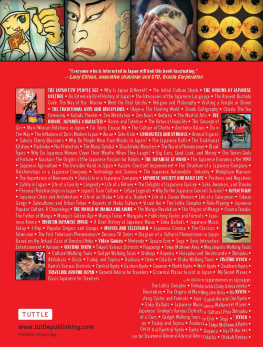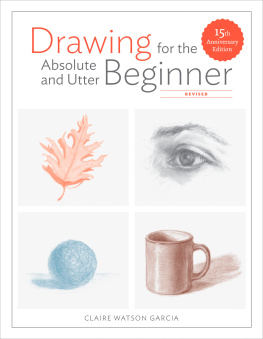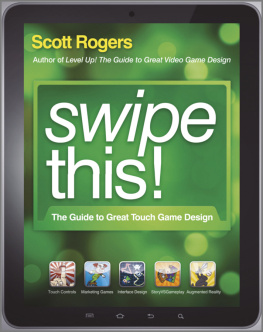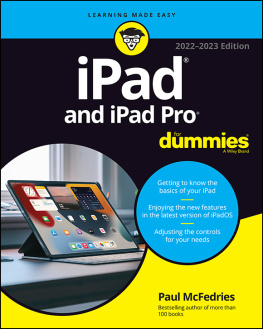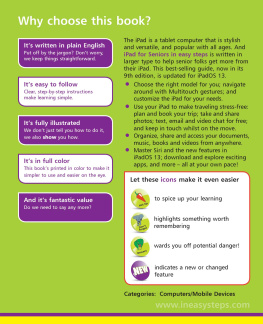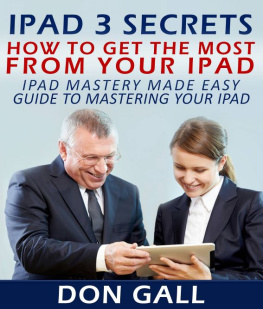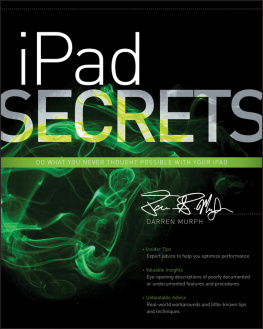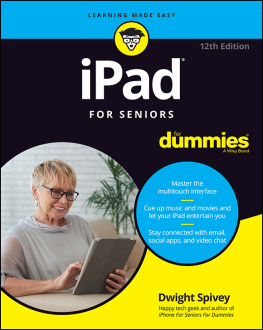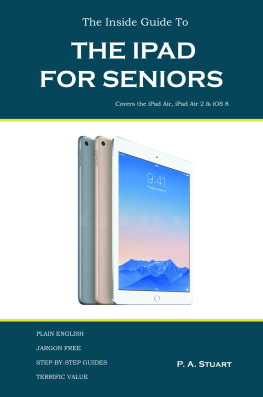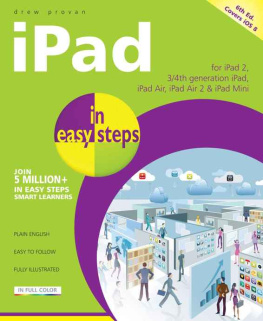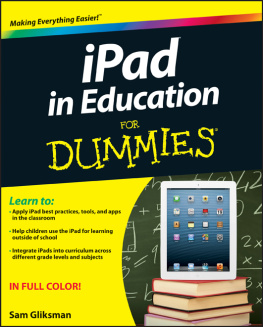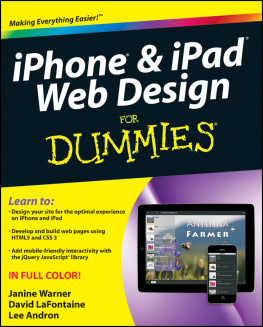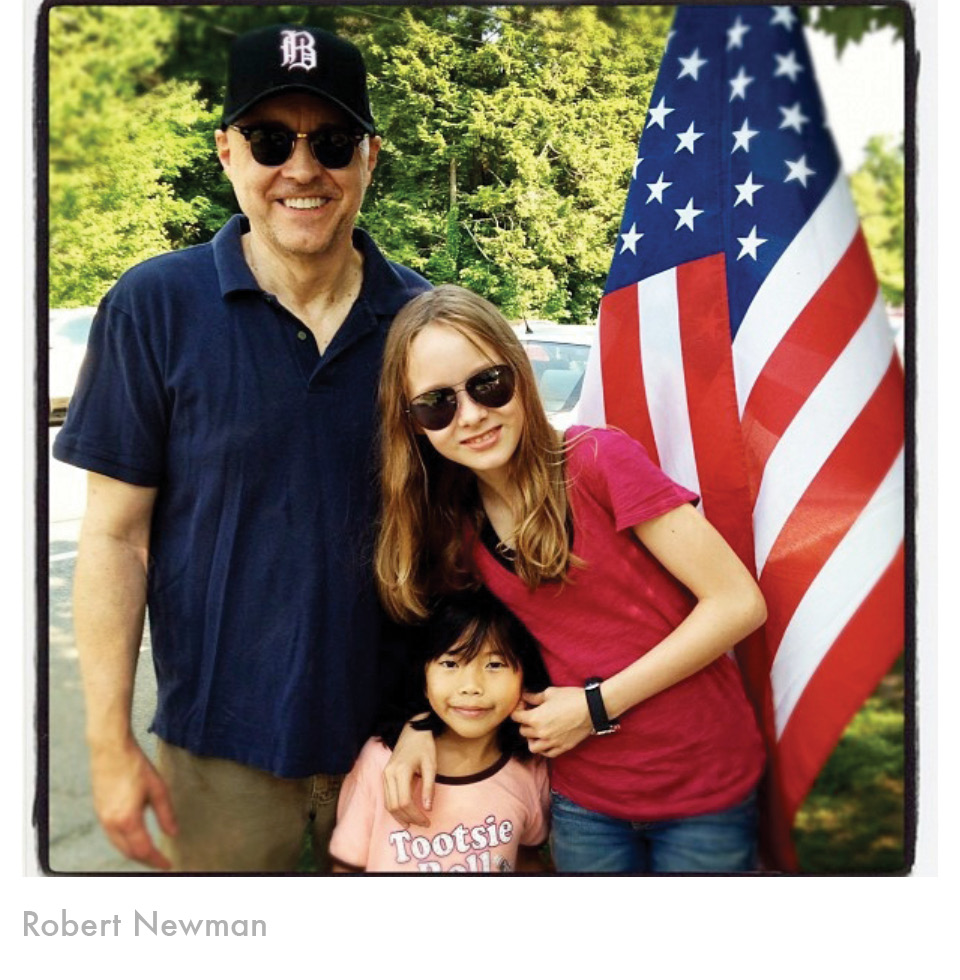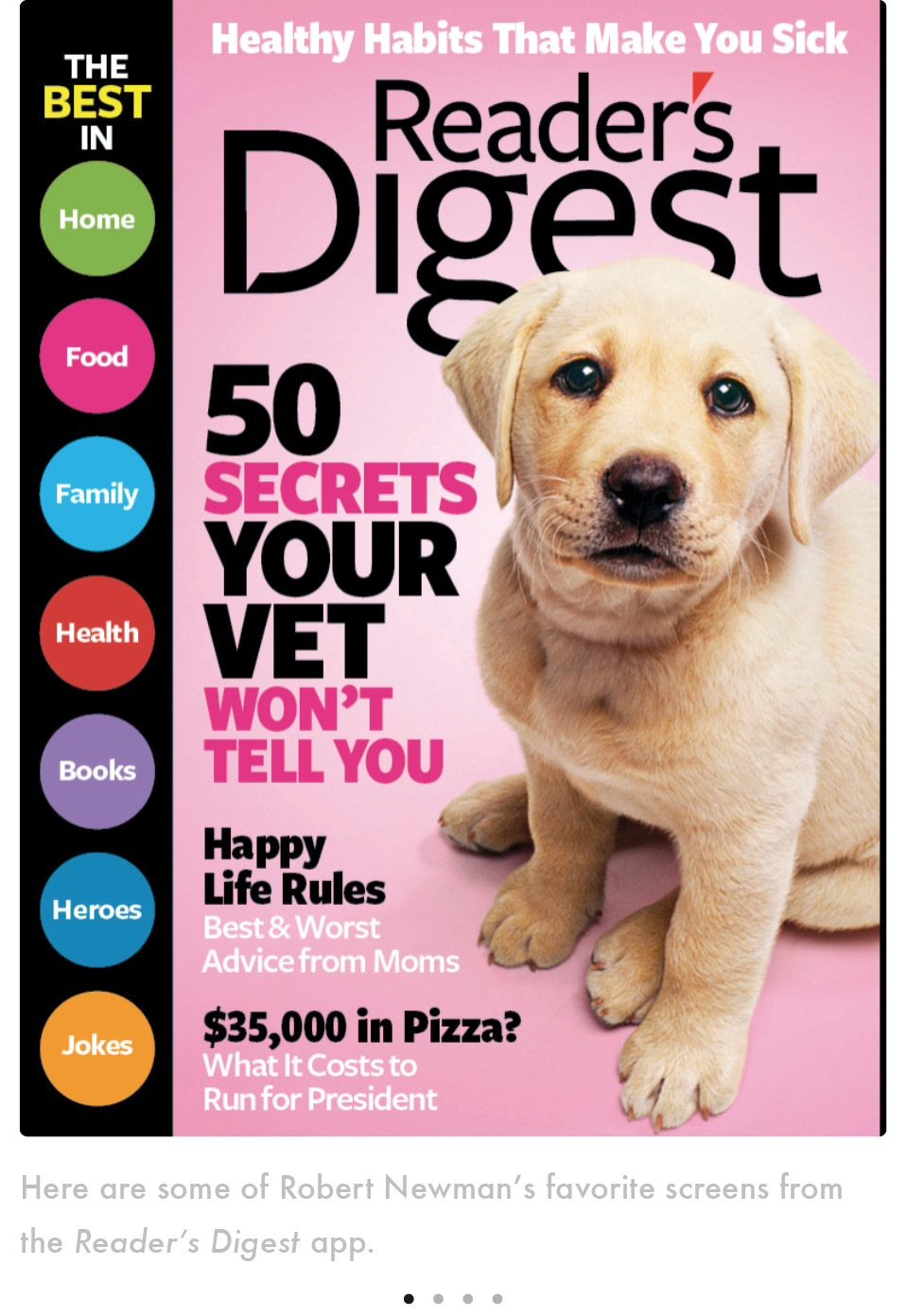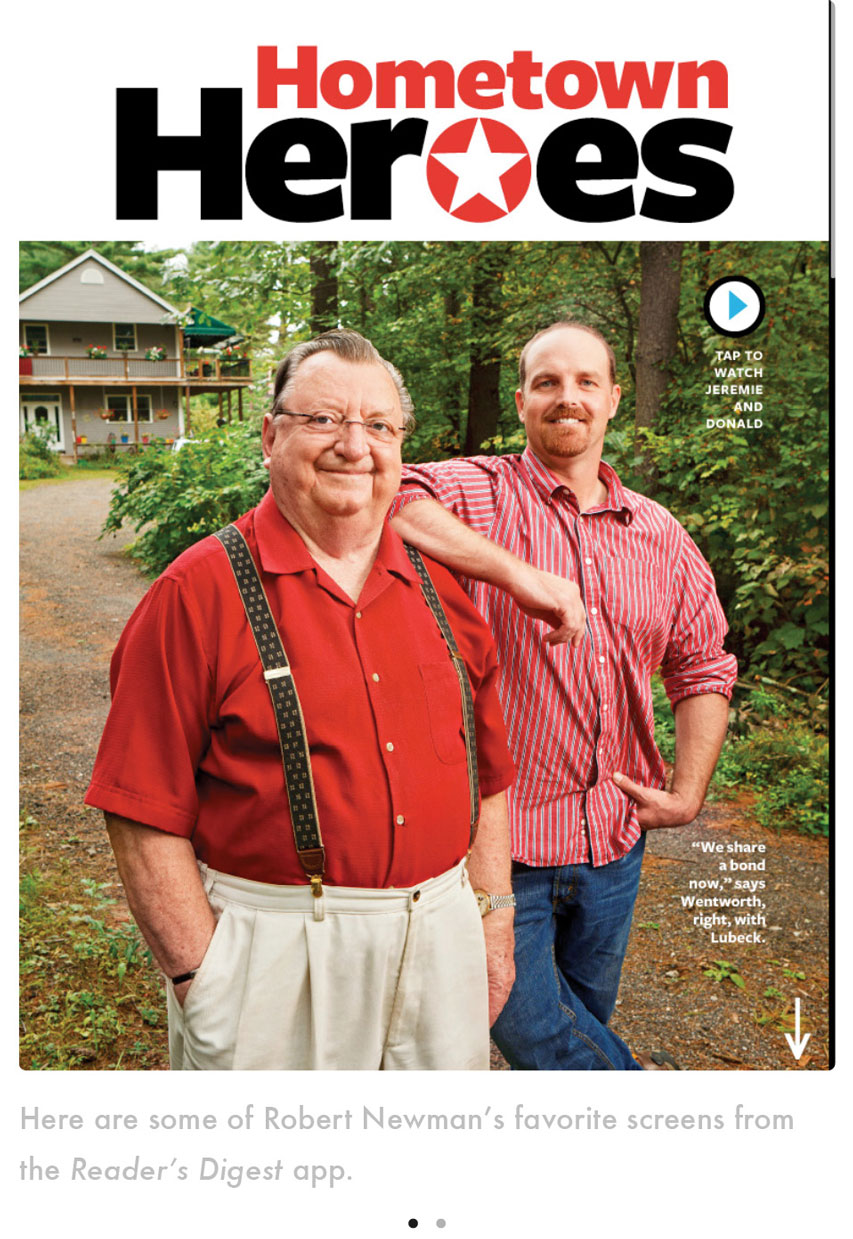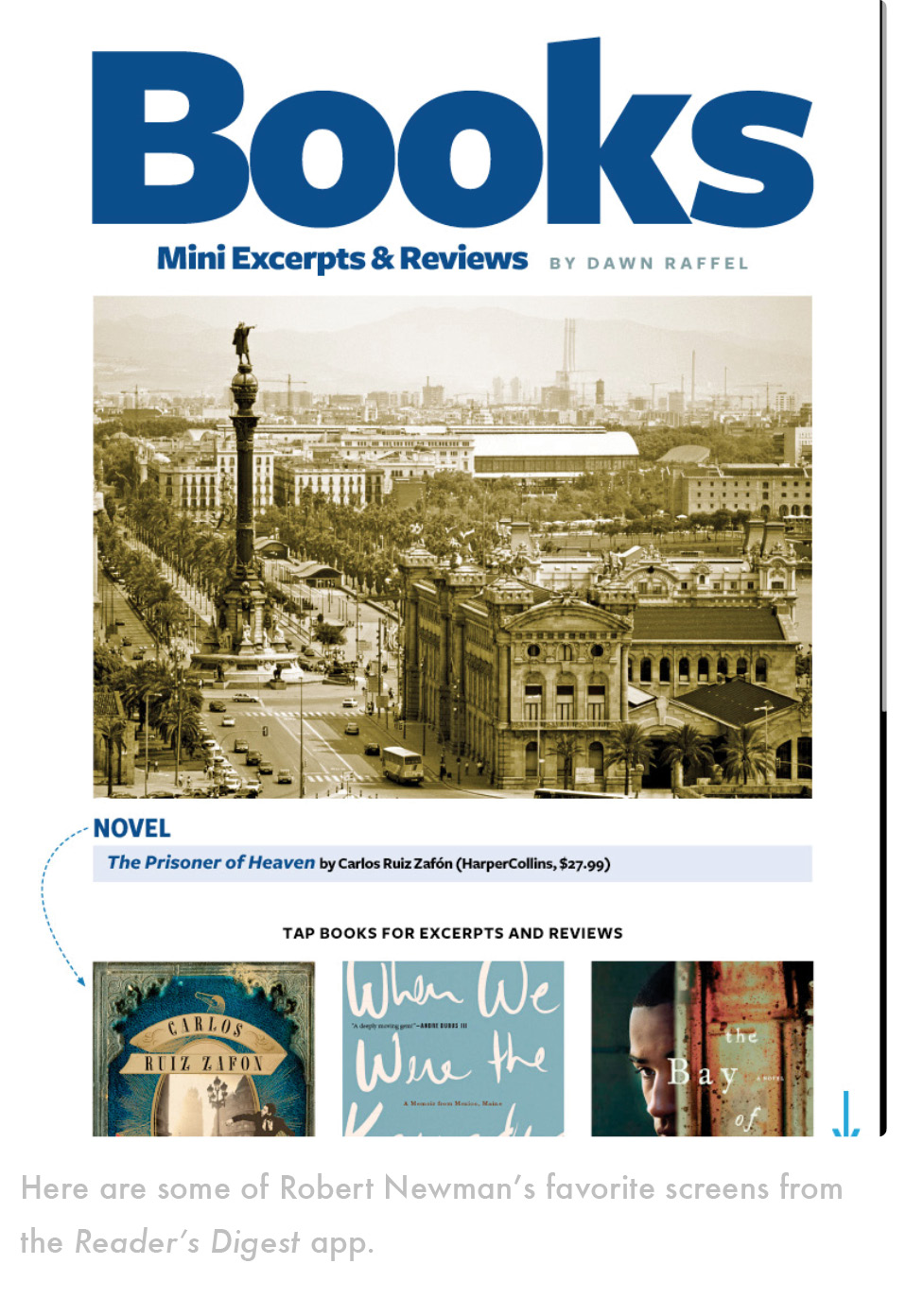Sign up for our newsletter and receive special offers, access to free content, and information on the latest new releases and must-have designing resources! Plus, receive a coupon code to use on your first purchase from MyDesignShop.com for signing up.
We learn something new every day about the magnificent tablet platform and its users.
1. FOREWORD: ROBERT NEWMAN, FORMER CREATIVE DIRECTOR, READERS DIGEST
THE TAKEAWAY
Whether youre an old hand (ha!) at tablet design or just starting out, whether youre an art director, editor, content creator or production designer, I hope that this book changes your life ...
Here we are, two years into the age of the iPad (and other platforms), and most of the tablet designers I know are still learning on the job. We grab on to any material we can find: random blog posts, panel discussions hosted by the Society of Publication Designers and other professional groups. But theres no state-of-the-art resource to call on as reference, where smart, visual thinking explains exactly how publication apps are supposed to be created and put together.
Thats why Im very happy that Mario Garca has written iPad Design Lab: Storytelling in the Age of the Tablet. New apps designed by new designers are launched every day, and I expect this book will become (at least for a brief time, things changing as quickly as they are) the bible of tablet design.
I worked at Readers Digest, designing their iPad (and Kindle Fire) app from late 2010 to August 2012. I got the job without having any iPad experience or training, my iPad still fresh out of the box. I owe it all to Mario. In June 2010, he organized an iPad seminar at the Poynter Institute that brought together some of the finest minds then working in the very new field. I was scrapping for work, suffering from the big magazine kill-off of 2009. I read about Marios seminar, saw some names I respected, bought a plane ticket to St. Petersburg and ordered an iPad, which arrived the day before I flew down.
In true Mario style, the seminar was a brilliant mix of theory and practice, with people like Joe Zeff, D.W. Pine from Time and Roger Fidler passing along a ton of learning. There werent that many people there, maybe three dozen, but I bet they are all creating amazing apps these days. And throughout the whole event there was Mario, the newspaper-cum-digital guru, who effortlessly convinced everyone that (1) they could enter this new world; (2) that it was a great thing, being essentially the logical extension of publication design in the twenty-first century; and (3) that we would all have fun doing it (and maybe make moneybut the jury is still out on that one!).
I left invigorated, started studying madly and talked my way into a job at Readers Digest by explaining that I had been to an intensive training session led by Mario Garca. It sounded impressive, and here I am 18 months later, having created iPad and Kindle Fire apps, and working as a consultant on the startups of many more.
This book has a perfect subtitle because Mario has always been a master visual storyteller (and a storyteller in general, as those who follow the elegant and enchanting prose on his blog are well aware). Its fitting that the person who did so much to bring newspaper design into the twentieth century (they were a little behind) is now bringing publication design into the twenty-first. Mario has been a guiding light for so many of us working in this new field, and with this book he will influence many more. Whether youre an old hand (ha!) at tablet design or just starting out, whether youre an art director, editor, content creator or production designer, I hope that this book changes your life as much as Marios advice and wisdom has changed mine.
Robert Newman is the former creative director of Readers Digest. He has been the design director of Real Simple, Fortune, Vibe, Details, New York, Entertainment Weekly, The Village Voice and Guitar World. He has directed and redesigned numerous publications and has been the consulting creative director at Cottage Living, AARP and O magazines. Follow him on Twitter at @newmanology.
2. INTRODUCTION
THE TAKEAWAY
It is all about the story on the new tablet platform.
This is a textbook about storytelling. Although its central premise is storytelling on the new platform we refer to as a tablet, it has its roots in the processes that lead us to capture the essence of a story, think about all the possibilities to present it and explore the most effective ways to engage an audience.
My training as a storyteller began when I chose to study journalism, but I was engaged by stories and storytellers long before that time. My paternal grandmother would read me stories in my early childhood in Cuba. As a child actor in the Havana of the 1960s, I was studying my lines for the various roles I played on television, theater and in one film. At the age of eleven, I was already so aware of the power of stories, especially those about people, that I embarked on an adventure as publisher. I became the writer, editor and designer for a mimeographed newspaper I called Critica y Arte (something like Art and Reviews), which I sold for about five cents inside the studios of CMQ network.
What has changed? Some fifty years later, I continue to be in the storytelling business and am still as mesmerized by the power of a good story to seduce an audience. My role for decades has been as a visual journalist: engaging audiences with the way stories are packaged and designed.
LOYALTIES
Much is discussed today about whether one medium or the other is the most important: Print first or digital first is the typical debate. In my opinion, the story comes first, as it has since the Bible, Aesops fables and the earliest radio broadcasts. Here I am in 2012, writing this digital textbook about storytelling for the tablet. I find myself totally engaged with this marvelous platform whose potential we have only begun to discover as we take baby steps from news apps in version 1.0 to future generations of 5.0 and beyond. Some of my colleagues ask me why I have embraced the iPad with such gusto, even asking if I have lost my loyalty to print. In response, I simply shake my head, repeat the word nonsense and remind them that my loyalty is to the storytelling process, not to a medium.


